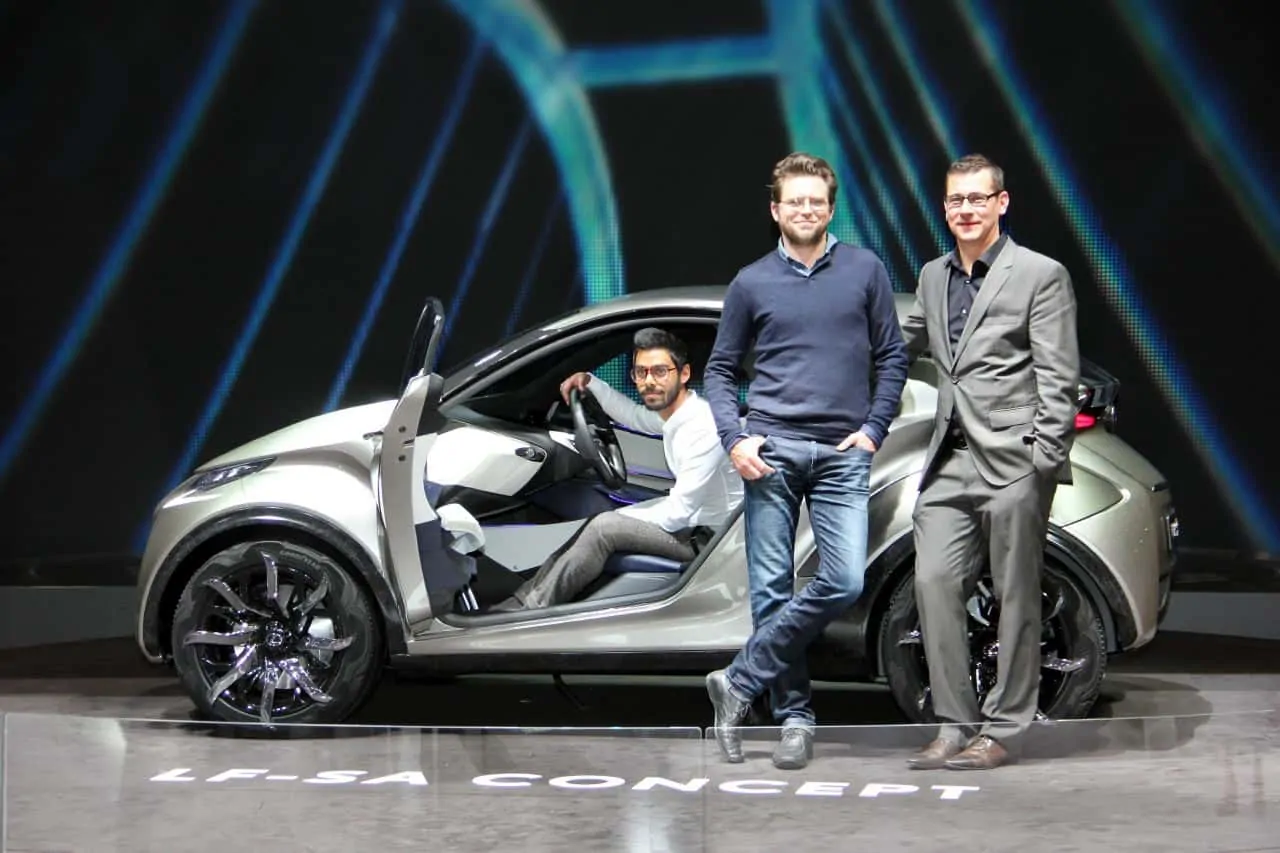Like the exterior, the interior it is also full of interesting details, such as buttons within the seat base to move the pedals fore and aft, a steering column made from paper and 3D printed elements used on the armrests.
Alam and the design team experimented with 3D printed technology to develop elements that were soft as well as progressive. These malleable, weave like fixtures create padding for the door panels and center console for a heightened luxury feel. It looks and feels hand-tailored, as does the nubuck leather adorning the seats, center console and door panels.
“In order to be progressive we wanted to use materials that you wouldn’t expect to see in a car and really push them forward for future luxury,” Alam cites. The LF-SA’s door panels are clearly separated. Some areas are really focused on the driver and covered in hardwearing leather, while others are adorned with perforated Alcantara. “We wanted to disguise certain things but at the same time keep technology at the forefront.”

The gauge cluster is also worthy of note. Nestled in an angular element directly ahead of the steering wheel, the single circular readout combines the functional quality of a digital readout with the aesthetic quality of an analog one.
“In the near future, digital technologies are going to be replacing what we refer to as something analog, so we decided to fuse the two together,” says Alam. “That way you get the feeling of something digital, which is progressive, at the same time it’s more luxurious, as it’s combining something physical.”
The IP is very simple with a strong horizontal emphasis to widen the cabin. A floating element over the upper feeds off of the door panels to enclose the cabin when the doors are closed, adding to the driver focus and minimizing distraction.

Designers also addressed the theme of sound in the LF-SA project, Alam highlights, and to capture these sound elements, designers placed speakers in the door panels and covered them with perforated materials. Amplifier lamps at the top of the center console and beneath the IP also add to this theme, while the console itself is divided into two elements, which intertwine and flow backward through the cabin space.
The IP itself features a storage shelf — which references the classic Fiat Panda — that replaces a conventional glovebox. “What we anticipated in the future is that, as technology advances devices will be getting smaller and the need to have a glovebox will probably disappear,” says Alam. “This is something we’re investigating at this stage.”
But the clever detailing and nod to artistry doesn’t end there. Above the passengers in the headliner is an element made from resin that has been embedded with ink and lit via fiber optics. The LF-SA designers had no control over the pattern that emerged post ink injection, but it looks very contemporary. It can also be lit in various different colors.
The Lexus LF-SA is a very interesting proposition coming from a company that has been really pushing a far more extroverted design than anything else we’ve seen in recent times.
While the LF-NX concept car shown at the 2013 Frankfurt show yielded the impressive, more muted NX design, Lexus is once again proving that it is still hellbent on blazing a path towards very expressive design.
If the LF-SA concept makes it to the production stage, it will undoubtedly lose some of the more extrovert elements, but only time will tell if the public is ready for such a bold small car.





